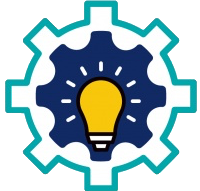ASME B31.3 Process Piping Design Code
Details :
This training
course will focus on learning the ASME B31.3 for Pressure process piping for
the design, materials examination, testing and nonmetallic piping. This
training course further provides an introduction to the different parts of the
ASME B31.3 Standard and will cover all requirements for safe design,
construction, inspection, testing, operation and maintenance of liquid pipeline
systems.
The
ASME B31.3 Code focuses on the requirements for process piping related to the
design, construction, fabrication, inspection, examination in a safe and
economical piping system.
This training course will feature:
- Design
Considerations & Criteria
- Pressure Design
of piping Components
- Fluid service
requirements for piping components
- Flexibility
& Support
- General
requirements of materials
- Fabrication,
Assembly, and Erection of piping system
- Inspection,
Examination, and Testing of piping system
- Nonmetallic
Piping and Piping Lined with Nonmetals
- Piping for
Category of Fluid Services
- The aim of this
comprehensive training course is to provide the delegates with enough
knowledge and skills about process piping related ASME B31.3
- Identify the
design of piping flanges and blanket
- Welding and
Brazing Qualification, procedures Specifications
- Explain the
Fabrication, Assembly, and Erection and identify the required inspection
and testing Define hydrostatic pressure and hydrostatic-pneumatic tests
- Receive the
enough information about the Fluid Service Requirements for Materials
- Explain of
nonmetallic piping design, Fluid Service Requirements, inspection and
testing
- Employ pre and
post weld heat treatment and identify the Charpy impact testing
This training course is suitable to a wide range of
professionals but will greatly benefit:
- QA/QC inspectors
- Maintenance
Engineers
- Inspection &
testing professionals
- Fabrication
Engineers
- QA/QC
reliability professionals for oil and gas (Petrochemical and Refining)
operations
- Fresh graduates, piping engineers
and designers
Day One
- Introduction and history of ASME
codes
- Scope and Definitions
- Content, Coverage and Exclusions
- Design include Design Pressure,
Design Temperature
- Listed Components Unlisted
Components
- Allowances for Pressure and
Temperature Variations
- Allowable Stresses and Other
Stress Limits
- Bases for Design Stresses
- Casting Quality Factor, Ec and
Weld Joint Quality Factor, Ej
- Pressure design of components
- Branch Connections
- Pressure Design of Flanges and
Blanks
- Fluid service requirements for
piping components and piping joints
Day Two
- Flexibility and support
- Chapter iii materials
- Listed Materials, Unlisted
Materials. Unknown Materials. Reclaimed Materials.
- Lower Temperature Limits
- Impact Testing Methods and
Acceptance Criteria
- Fluid Service Requirements for
Materials
- Chapter IV Standards for Piping
Components
- Chapter V Fabrication, Assembly,
and Erection
- Welding and Brazing Qualification,
procedures Specifications.
- Preheating
- Heat treatment requirements
- Bending and forming
- Assembly and erection
Day Three
- Chapter VI Inspection,
Examination, and Testing
- Responsibility and qualifications
for Inspection and examination
- Extent of Required Examination
- Radiographic and Ultrasonic Examination
- Testing Required Leak Test
- Hydrostatic Leak Test
- Pneumatic Leak Test
- Hydrostatic-Pneumatic Leak Test
Day Four
- Chapter VII Nonmetallic Piping and
Piping Lined with Nonmetals
- Pressure design of piping
components
- Fluid service requirements for
nonmetallic materials
- Materials general requirements
- Fabrication, assembly, and
erection
- Inspection, examination, and
testing
- Chapter viii piping for category M
Fluid Service
Day Five
- Chapter IX High
Pressure Piping
- Chapter X High
Purity Piping
- Review codes
appendix
- Review of codes
tables
• All
lectures are in colorful presentation
• All
lectures are interspersed with interactive discussion
• All
lectures include group discussion, case history and exercises
• Actual
major incidents as well as industry experience are reviewed
• Participants
receive a multicolor course manual
• Pictures
of real incidents and case history are shown
• Videos
on the subject are shown
09:00 to 15:00 including lunch and coffee breaks


